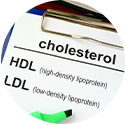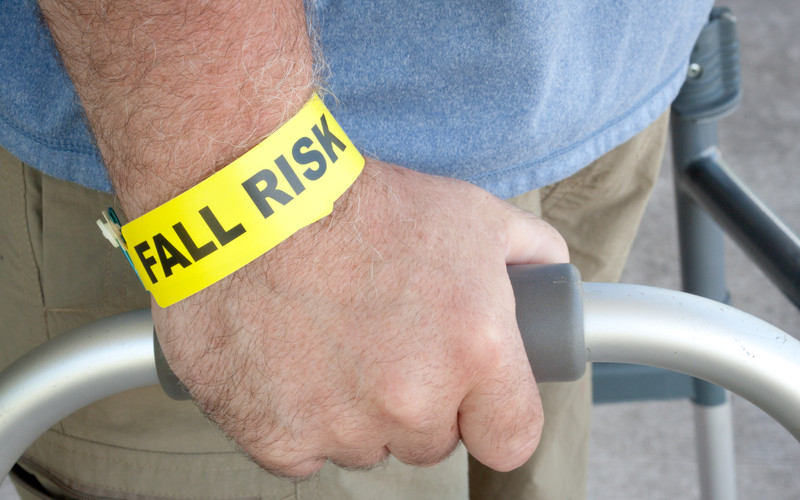As more people may find themselves taking more painkillers and anti-inflammatories to manage chronic pain, and taking more medications to help counter balance the side-effects of these medications, namely stomach and digestive upset, researchers are finding out that the accumulation of these extra medications is putting people at greater risk for fall and hip fracture risk. The research indicates, there is a problem with patients on certain medications having an increased fall risk and subsequent possible need for a prolonged hospitalization following hip fractures.
A study from November 2020 (1) paints a picture of the problem people, especially elderly people have with too much medication and subsequent hospitalizations because of injuries sustained during a fall.
“Falls amongst older people are common; however, around 40% of falls could be preventable. Medications are known to increase the risk of falls in older adults. The debate about reducing the number of prescribed medications remains controversial, and more evidence is needed to understand the relationship between polypharmacy (multiple medications to treat the same health problem) and fall-related hospital admissions. (We conclude:) The risk of hospitalization due to a fall increased with polypharmacy. It is suggested that prescriptions in older people should be revised on a regular basis, and that the number of medications prescribed be kept to a minimum, in order to reduce the risk of fall-related hospital admissions.”
A May 2021 study (2) expanded this further by examining the fail risks in patients taking anticholinergic medications (typically for urinary disorders). The research team wrote: “We learned that people who are moderate to high users of these medications (often people who will use more than one of these medications) had a higher risk of falling. It was less clear if people who have a lower burden (often people who only use one of these medications) had an increased risk of falling. . . These findings suggest that we should reduce use of these medications. This could reduce the number falls and improve the well-being of older people.”
Why increase someone’s medications? The double jeopardy of fall risks
A March 2020 study (3) shows us why pain management is considered essential in older patients with knee pain. In this study of patients over 70 years old and 52% being women, 36% participants were categorized as having knee pain. This group took more medications and had more medical conditions compared to the no pain group. The pain group had poorer balance, physical function and strength and reported increased concern about falls. Sixty one participants (20%) reported more than 2 falls, with the pain group twice as likely to experience multiple falls over the 12 month follow up.
This study has identified several medical, medication, psychological, sensorimotor, balance and mobility factors to be associated with knee pain, and found the presence of knee pain doubles the risk of multiple falls in older community living people. Alleviating knee pain, as well as addressing associated risk factors may assist in preventing falls in older people with knee pain.
The trick is, how do you alleviate the knee pain? Medications may not be the answer, in fact, they may be the problem.
Fracture-Associated-Drugs
A study (4) from researchers at Dartmouth University associated a higher risk of hip fractures in older patients taking medications to manage numerous chronic conditions. These conditions include mood and depressive disorders, Type 2 Diabetes, chronic pain, stomach and gastric disorders, and sleep problems. The researchers of this study suggest: “caution when combining fracture-associated medications, especially when use is discretionary, alternatives exist, or baseline fracture risk is high.”
Earlier studies have established that commonly prescribed drugs such as opioid painkillers, antidepressants, antacids, and sleep aids, are known to cause increased risk of fractures. This lead to a classification of these medications as Fracture-Associated-Drugs or FADs.
In other words, the suggestion to doctors is, look for alternatives to the medications if available. At the Magaziner Center we strive to utilize natural and nontoxic therapies that have been shown to be clinically effective in helping problems these drugs seek to address. Our mission is to do no harm while finding the right treatments and therapies to best suit the needs of each individual patient.
Drug combinations that appeared especially dangerous
The Dartmouth team examined specific combinations of these drugs, some, according to the researchers, appeared especially hazardous.
This list includes drugs under the headings of:
Inhaled Steroids
Oral Steroids
Proton Pump Inhibitors which reduce stomach acids.
H2 Antagonists/ Histamine 2 Receptor Antagonists to treat gastroesophageal reflux disease (GERD) and gastrointestinal ulcers.
SSRI/SNRI Selective Serotonin and Selective Noradrenergic Reuptake Inhibitors that treat major depressive disorder, anxiety disorders, obsessive–compulsive disorder, attention-deficit hyperactivity disorder, and chronic neuropathic pain.
Tricyclic Antidepressants
Thiazolidinediones for Type 2 Diabetes
Anticonvulsants
Benzodiazepines
Barbiturates
Opioids
Muscle relaxers
1st Generation Antihistamines/ H1 Receptor Antagonists such as Benadryl.
Anti- Parkinson’s Disease
Centrally-Acting Antihypertensives
1st-Generation Antipsychotics and 2nd-Generation Antipsychotics
Loop Diuretics
Thiazide and Thiazide-like Diuretics
Sedative Hypnotics
“Many risky pairs of Fracture-Associated-Drugs included potentially avoidable drugs.”
This was an exhaustive study by the Dartmouth researchers, amassing data from over 11 million patients. Their conclusion includes the word “avoidable.”
“Among older adults, FADs are commonly used and commonly combined. In this cohort study, the addition of a second and third FAD was associated with a steep increase in fracture risk. Many risky pairs of FADs included potentially avoidable drugs (eg, sedatives and opioids).”
Many of the medical conditions we treat at the Magaziner Center, are often considered chronic conditions and not curable by conventional practitioners. Our method is to seek out the actual source of the problem, work to correct it, and in the process eliminate your symptoms without the use of toxic pharmaceuticals.
It is not easy getting off these medications – the problems of dependence and withdrawal
A study in the prestigious medical journal Lancet Psychiatry (5) examined problems with over prescribing drugs that carry dependency and withdrawal risks. This included many Fracture-Associated-Drugs prescribed to patients in England.
The researchers noted: Antidepressants, opioids for non-cancer pain, benzodiazepines and Z-drugs (Sleep disorder drugs such as zopiclone, zaleplon, and zolpidem) are commonly prescribed medicine classes associated with a risk of dependence or withdrawal. In one year over a quarter of the adult population in England had a prescription dispensed for antidepressants, opioids (for non-cancer pain), benzodiazepines, and sleep disorder drugs. Long-term (more than 12 months) prescribing is common, despite being either not recommended by clinical guidelines or of doubtful efficacy in many cases.
This is what we see in many patients. Long-term medication use that is “of doubtful efficacy.” Medicine that is not helping and could be making the patient’s quality of life worse.
PIP – potentially inappropriate prescribing
A January 2020 study in the journal Maturitas (6) investigated the prevalence of potentially inappropriate prescribing (PIP) in older patients with falls and syncope (blackouts and fainting spells).
Potentially inappropriate prescribing was present in 98 % of 374 patients.
The most frequent unaddressed persistent forms of potentially inappropriate prescribing were prescriptions of vasodilator drugs for patients with orthostatic hypotension (16 %), and benzodiazepines for more than 4 weeks (10 %) or in fall patients (8 %), and omission of vitamin D (28 %), antihypertensive drugs (24 %), and antidepressants (17 %).
Almost every patient in our study population suffered from potentially inappropriate prescribing.
Too much medication makes you a fall risk, but you are getting them anyway
Many patients we see come in with a long list of medications. Many of them do not understand what they are taking and why they are taking them. We work with these patients to safely and responsibly examine their medications and help wean them off as many as we can.
For over 30 years we’ve been offering our patients effective and nontoxic complementary medical care. At the Magaziner Center, we strive to address the root causes of health issues that have not responded to conventional treatments, utilizing the latest testing techniques to do a thorough assessment of your body’s unique biochemistry.
If you would like to explore more information, please contact our office so we can start a conversation with you.
Related articles
Do Painkillers Reduce Testosterone Levels? Research Says Yes
1 Zaninotto P, Huang YT, Di Gessa G, Abell J, Lassale C, Steptoe A. Polypharmacy is a risk factor for hospital admission due to a fall: evidence from the English Longitudinal Study of Ageing. BMC Public Health. 2020 Nov 26;20(1):1804. doi: 10.1186/s12889-020-09920-x. PMID: 33243195.
2 Stewart C, Taylor-Rowan M, Soiza RL, Quinn TJ, Loke YK, Myint PK. Anticholinergic burden measures and older people’s falls risk: a systematic prognostic review. Therapeutic advances in drug safety. 2021 May;12:20420986211016645.
3 Hicks C, Levinger P, Menant JC, Lord SR, Sachdev PS, Brodaty H, Sturnieks DL. Reduced strength, poor balance and concern about falls mediate the relationship between knee pain and fall risk in older people. BMC Geriatr. 2020 Mar 6;20(1):94. doi: 10.1186/s12877-020-1487-2. PMID: 32138672; PMCID: PMC7059317.
4 Emeny RT, Chang CH, Skinner J, O’Malley AJ, Smith J, Chakraborti G, Rosen CJ, Morden NE. Association of Receiving Multiple, Concurrent Fracture-Associated Drugs With Hip Fracture Risk. JAMA Netw Open. 2019 Nov 1;2(11):e1915348. doi: 10.1001/jamanetworkopen.2019.15348. PMID: 31722031; PMCID: PMC6902800.
5 Marsden J, White M, Annand F, Burkinshaw P, Carville S, Eastwood B, Kelleher M, Knight J, O’Connor R, Tran A, Willey P, Greaves F, Taylor S. Medicines associated with dependence or withdrawal: a mixed-methods public health review and national database study in England. Lancet Psychiatry. 2019 Nov;6(11):935-950.
6 de Ruiter SC, Biesheuvel SS, van Haelst IMM, van Marum RJ, Jansen RWMM. To STOPP or to START? Potentially inappropriate prescribing in older patients with falls and syncope. Maturitas. 2020 Jan;131:65-71.





































Recent Comments